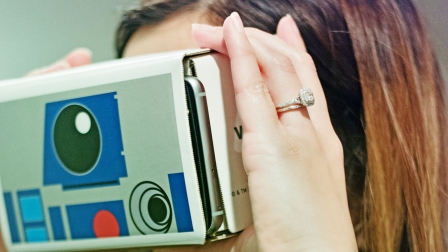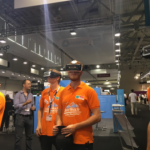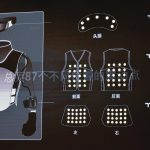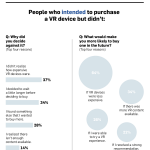Virtual Reality Is Coming For Weddings
Destination weddings can be fraught with guest-list politics. Do I have to invite my second cousin’s inappropriate girlfriend? I’m inviting my high school best friend, but only because I’m sure she’ll decline. But now, literally anyone can attend your wedding—virtually, at least.
“Everyone always tells you, When you’re planning a wedding, it’ll fly by, be sure to enjoy it, and I knew they were right,” says Will Goldstone, who had his London nuptials recorded with a Kodak SP360 4K Action camera. “A 360 video allowed us not only to capture that viewpoint, but also to see guest reactions and the atmosphere in a way that would never be possible with ordinary video.”
A VR wedding lets you enjoy multiple angles from the reception— a walk down the aisle, a disapproving mother in the first row—in a seamless panoramic view. It also lets the couple relive the experience.
“Imagine you had a grandmother who couldn’t make it to the wedding for some reason—now she could, with 360-degree goggles,” says Edwin Rogers, founder of VR Video, a production service in New York. “VR does a great job of re-creating the feeling of being in more than one place at once. That’s powerful: How can you be in two places at one time? There’s no other way than virtual reality.”
The market for VR (as the cool kids say it) and AR (augmented reality) are expected to hit $150 billion in revenue by 2020,, drawing venture capitalists to everything from devices to multimedia projects to the tune of $2 billion last year. Analysts predict that over 12 million virtual-reality headsets will be sold in 2017, which means VR has the potential to be “one of the most disruptive technologies for a decade,” according to the industry analyst firm CCS Insight.
And while some might automatically associate VR with video games, the experience is quickly redefining live event coverage. For example, NBC promises 85 hours of virtual-reality programming during the Olympic Games in Rio.
Now the technology is seeping into more niche markets, like personal events and celebrations. Event companies and photographers are ramping up their offerings for the modern couple, be it an engagement, wedding, or honeymoon 360-degree video. Countless YouTube videos show ceremonies, event space tours, or the wedding party dancing in 360 format, which uses a spherical camera system to simultaneously record 360 degrees of a scene.
Rogers, who recently launched an app tailored toward 360-degree and live wedding videos called LiveKnot.com, views the wedding market as a growing addition to his client roster. He works with established media brands like The Weather Channel or large-scale events such as the upcoming Democratic National Convention.
But with the latest technology—a combination of more affordable and advanced 360-degree cameras and quicker post-production editing programs—360-degree wedding videos are no longer a wildly expensive, farfetched idea. It’s not necessarily cheap (services range from $2,000 to $10,000), but it’s potentially doable. LiveKnot.com has already garnered over a few hundred requests, particularly from couples doing “destination” weddings.
“What’s been prohibiting [the growth of targeting the wedding market] has been the price point,” Rogers explains. There is still work that goes into the finished product, such as using stabilizers to add movement or adding motion graphics. But it’s a far cry from what it once was. Previously, stitching together an hour of 360-degree video could take nearly a week to edit. Now, Adobe has an edit program that eliminates a good chunk of what was once a labor-intensive process. With a variety of live feed options, including the recently announced YouTube 360 Live, companies can cut out previous dependencies on satellite trucks and feeds. You can basically stream live video from your phone.
“Everything is coming together really quickly, and there’s been a lot of development work that is making it available to everyone, as opposed to people with just really highly specialized software,” says Rogers. “360 video has been around for a while, but it’s really taken off in the last two years.”
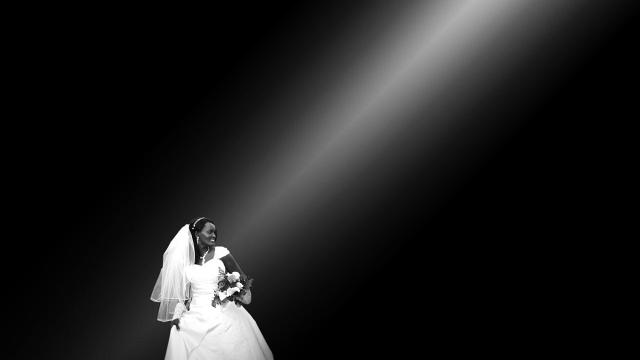
That growth has helped David Marlett, founder and CEO of Cinemersia, a live-action VR cinema production company that will record several 360-degree weddings this season. He currently relies on the Samsung Gear 360, but come October, when his own daughter will marry, he’ll likely upgrade to the Nikon KeyMission.
Even just a year ago, 360 video could look rather pixelated for live action, but, says Marlett, it will only get better, clearer, and more detailed. “Your only limitation is the quality of the camera,” he says, adding, “you don’t even have to do a lot in post production.”
Indeed, VR has vastly improved, but we’re still not at Star Trek-level immersion. As Geoffrey McCabe, editor of Virtual Reality Times, explains, the ideal experience is a 360-degree 3D video in which one feels like they are stepping into the event.
“With any current technology under development, you still won’t be able to walk around inside the scene, like a spirit visiting the past, but you would at least be able to see everything unfold from a fixed spot where the camera was set up,” McCabe says. We’re likely still a decade away from that reality, but it’s “definitely coming” with the use of multiple 360-degree 3D cameras placed around a scene, with subjects filmed from multiple angles.
For the time being, most professionals rely on 360-degree cameras that project a flat image all around you, almost as if you were inside a ball watching an all-encompassing movie. “You won’t feel any sense of ‘presence’ like you’re actually there, because it’s not in 3D,” says McCabe. “But at least you can see all around you and turn around to see it if you’re wearing a VR headset.”
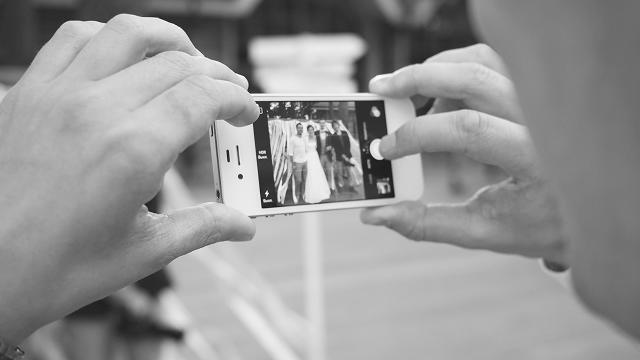
Tatiana Byron, founder of the Wedding Salon, a premier luxury bridal showcase, has seen it all in recent years: interactive photo booths, wedding drones, you name it. The various trends make her skeptical about the future of VR in the world of wedding video.
“Considering most couples now really only want a three-minute MTV-style video, it will really depend on how [companies] price it.” she says. “Video is not something most couples typically splurge on for weddings.”
Add to that the prediction that virtual-reality cameras might become a family staple in the next decade. They cost roughly $15,000 at this point, which is pricey for the average consumer, but the way Marlett sees it, VR cameras will soon be so affordable and easy to use, it will render his services obsolete. “You would just set them up, turn them on, and hit the record button,” he envisions.

He also admits that it is potentially easy for someone to buy a camera and DIY it. “360 video is relatively simple,” he says, noting that while your cousin could record it, some post-production will be necessary. “I think everyone will have a 360 3D camera in 10 years,” says McCabe, although “chip and video processing technology is going to need to be much better and faster before everyone can have it.”
Despite the progress, at least this wedding season, professionals are handling the VR.
“Whether you hire us or not, don’t get married without a VR camera there,” stresses Marlett. “What a shame if you don’t when you can now . . . You can then go back, be there, see your grandparents sitting there.”
Related Video: Will VR Go Mainstream?
Fast Company , Read Full Story
(32)

